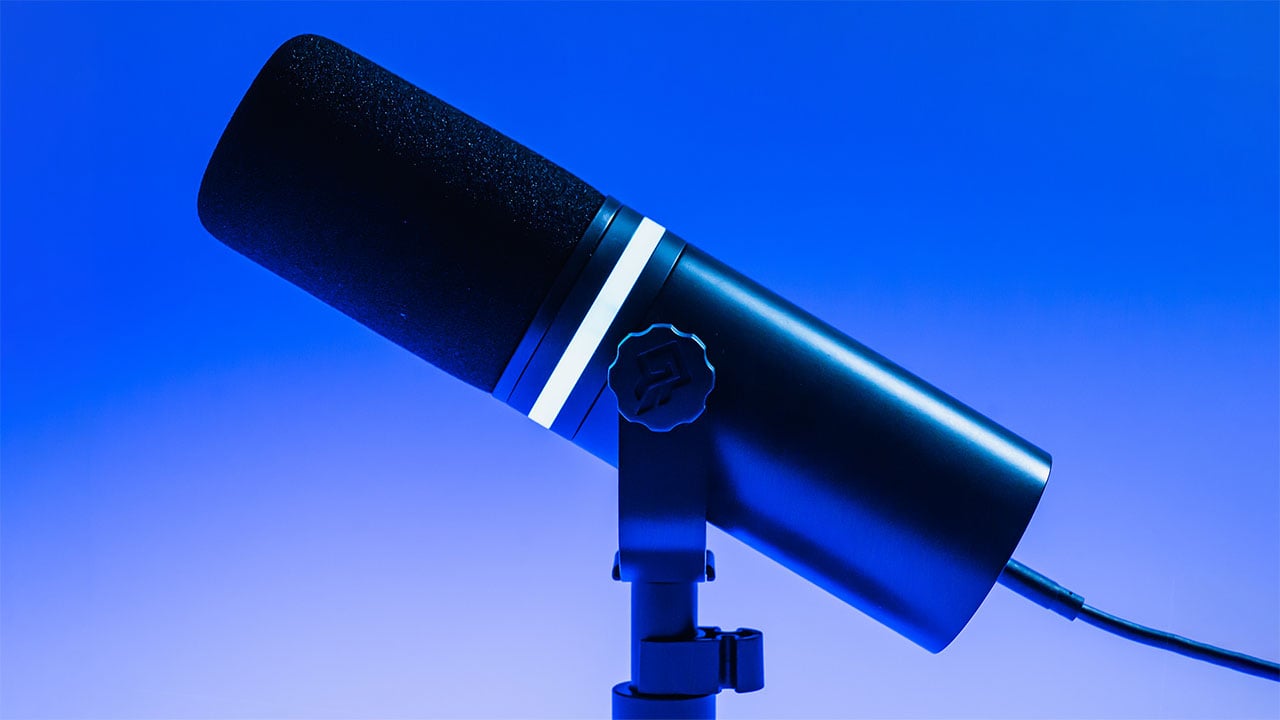
The Beacn Mic claims to be one of the most advanced USB dynamic microphones on the block. Let's see how it stacks up.
Recently we reviewed the Maono PD400X dynamic mic, which we found to be a superb performer, giving results beyond what you might expect from its price point. In this review we are going to be looking at an alternative to that mic, the Beacn Mic, which has been designed for podcasting, streaming and gaming.
Just like the Maono PD400X, the Beacn Mic allows delay free monitoring via its own 3.5mm headphone jack, as well as being able to perform on board compression and noise reduction, among other things, via an app. But let's start at the beginning and look at what you get in the box.
Package contents and build quality impressions
The Beacn Mic package comes with the microphone itself, pre-attached to a bracket with a cable management clip. However, the system doesn't come with a base, so you'll have to provide your own or, preferably, an arm. A very long 3 metre USB-C cable is provided, as well as a lengthy 1 metre headphone extension cable and a USB-C to USB-A adaptor.
The microphone itself is an all-metal construction and is USB powered only vs the USB or XLR choice you have with the Maono. But since this mic has been designed with streaming and gaming in mind, the lack of an XLR output isn't an issue. The mic provided to us had a black body, although an all white variation is also available. It features a replaceable foam windscreen cover along with a light that appears as a ring. Users have full control over the colour of the ring light, as well as being able to turn it off altogether. That is, if your computer meets certain criteria. Now, the ring light might seem like a gimmick, and it is to a degree. But, the reason for its existence is that the Beacn Mic has been designed to be on screen, and so it's there pretty much as extra set decoration. It can also be used as a level indicator.
The specs given by the manufacturer are as follows: A sensitivity of -27dBFS at minimum gain, A frequency response of 50Hz to 20kHz, and 94dB dynamic range. The pickup pattern of a cardiod type, as you'd expect for a dynamic mic. Very interestingly, on some systems the Beacn Mic can operate with 32-bit float, which should mean it is almost impossible to peak. This isn't available on all systems.
Whereas the Maono microphone allows some control over the equaliser effects using physical buttons on the mic itself, the Beacn Mic needs to be controlled via the desktop app, which is where one of my main hurdles occurred. The Beacn microphone app requires a Windows machine to run, and currently there's no Apple version. I've been told that they are working on one, but thus far there's been no ETA. So all my testing of the mic has been done without the addition of any EQ processing added by the app.
I'm hopeful that the Mac version of the app won't be too long down the line, because judging by what I've seen it looks to be quite powerful, allowing users full control over noise suppression, complete with visualisation so you can set it just right. Sounds like keyboard clicks can be filtered out, and all aspects of frequency control can be adjusted comprehensively. It's worth watching the tutorial video below to see just how in-depth it is.
Conclusions
As I mentioned in my Maono review, how good a mic sounds is quite a subjective thing. As you've seen above you can control the character of the mic if you have access to the app, but my audio version of this review below is recorded straight out of the mic with no in-device or post processing other than a volume boost. Despite the adjustability of the mic via its app, from a professional context many users will prefer to perform their adjustments after recording, and so it is good to hear what the raw unprocessed audio sounds like. Let me know what you think in the comments. I recorded the review from around 5-inches away of axis.
At £286 the Beacn Mic isn't a budget option, but to my ear it sounds exceptionally good, and the app gives it a huge amount of realtime recording flexibility. I do wish that it had an XLR port as well, and I really do hope that the Mac version of the control software will make its appearance sooner rather than later. But, if you are on Windows and require a very high quality mic, this should be one to consider if you have the budget and want something that looks good on-screen.
Tags: Audio Review microphones


Comments